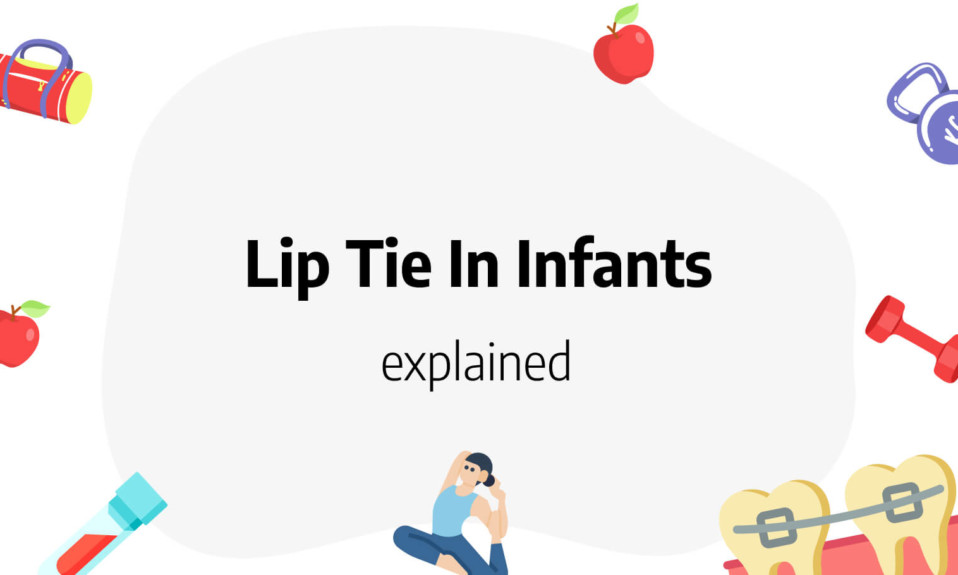Lip tie in infants is one of the least common alterations seen in the upper lip brake.
It can have a considerable impact on the child’s feeding if not corrected in time.
What is a lip tie?
Everyone has a tissue that connects the lips with the gums, called the labial brake. In some babies, the labial frenulum can be very short and stiff, causing an abnormality called a lip tie.
Brakes can undergo multiple anatomical alterations. Most of them are congenital, so it is very common to find them in babies. Among all the malformations that can develop in the oropharynx, one of the least common is the lip tie.
Lip tie in babies occurs mainly in the upper lip and can cause various complications. This anatomical anomaly causes phonetic problems and separation of the incisors.
What causes lip tie in babies?
At birth, the upper labial brake is tecto-labial.
In other words, it is short and thick in all individuals. Several studies report that the labial frenulum develops normally by 1 to 2 millimeters during the first months of life. Therefore, lip tie in babies occurs when this growth does not take place.
To date, no specific cause has been identified to explain the appearance of this anomaly. Since it is a congenital malformation, we know that it occurs in the womb. However, it is not possible to determine whether it is the product of genetics or the effect of some harmful agent.
What are the symptoms of a lip tie?
The permanence of a short lip brake in newborns can be difficult to identify because the symptoms are subtle. However, we can cite the following signs to look for:
- Difficulty sucking and breathing while breastfeeding.
- Clicking sounds when eating.
- Slow weight gain and frequent hunger.
- Fatigue and constant drowsiness while breastfeeding.
- Presence of colic.
In severe cases, it may be difficult to move the upper lip. The baby’s sucking is then impaired. This is also manifested by the presence of various symptoms in the mother’s breasts if she is breastfeeding. Among which we can mention the following:
- Sensation of breast swelling or complete emptiness, even after breastfeeding.
- Discomfort and pain during or after breastfeeding.
- Presence of breast nodules due to obstruction of the milk ducts.
- Mastitis.
How to feed a baby with a lip tie?
Lip tie in babies can make feeding very difficult, especially if they are breastfed. This is because the baby will have to make a greater effort to get the milk out of the breast. Because of this extra effort, the baby will be more tired and sleepy.
In this case, it is recommended to use a bottle. It can be filled with breast milk or powdered milk.
On the other hand, if you want to continue breastfeeding, you can apply various measures to facilitate sucking. For example, massaging the breasts and applying warm compresses before breastfeeding increases the flow of milk. In addition, good breastfeeding technique is crucial.
Complications of the lip tie
The most common complication of lip tie in babies is malnutrition.
Inadequate feeding can lead to underweight and slow growth in the child. It is important to remember that the nutritional needs of the newborn are greatest during the first months of life.
In more serious cases, the lip brake can insert itself directly into the upper palate and prevent the correct movement of the lips. This can lead to phonation problems causing dysarthria.
In addition, this alteration in the insertion of the labial brake also causes diastemas. In other words, an increase in the separation of the teeth. The upper incisors are most often affected.
Lip tie treatment
Depending on the severity of the situation, there are various treatment options that a physician can apply to reverse lip tie at an early age.
The procedures range from performing manual exercises to surgical resection of the lip tie. In this sense, the most commonly applied techniques are the following:
- Manual release: this measure is indicated for mild cases of lip tie. It is the least invasive and painful technique. It consists of basic finger exercises to stretch the lip tie and reverse the situation. Parents can perform these procedures.
- Frenectomy: This procedure is necessary in more severe cases. It consists of surgically removing the frenulum, usually with a laser, without the need for stitches. It is a quick procedure that is performed in the doctor’s office.










